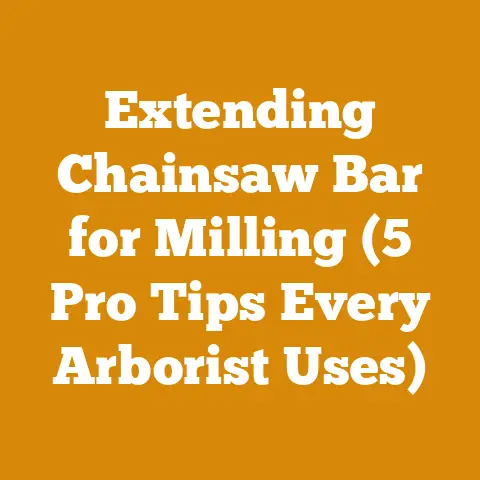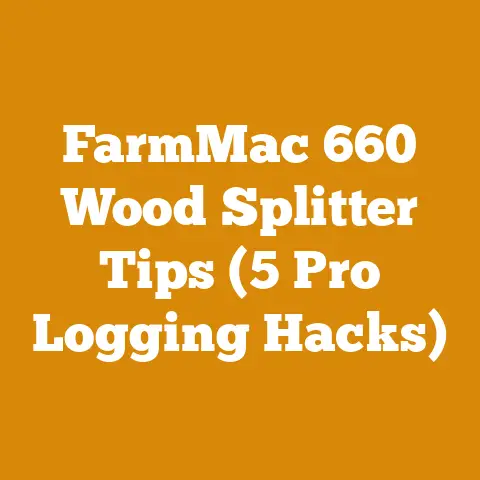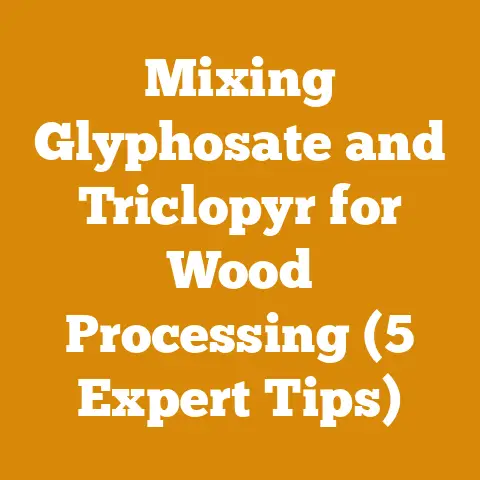Maple Syrup Clouds (5 Expert Tips for Clear Sap)
Maple Syrup Clouds: 5 Expert Tips for Clear Sap and Optimizing Your Budget
The Art of Clear Sap: Why It Matters
As a sugarmaker for over a decade, I’ve learned that the clarity of your sap directly impacts the quality of your syrup. Clear sap boils down to a lighter, more delicate flavor, and a higher grade classification, fetching a better price in the market. Cloudy sap, on the other hand, often results in darker syrup with a less desirable taste. This cloudiness is usually caused by bacteria, yeast, or mineral precipitates in the sap.
Here are five expert tips to help you achieve that coveted clear sap:
1. Hygiene is King: Meticulous Cleaning Practices
The single most important factor in obtaining clear sap is maintaining impeccable hygiene throughout the entire process, from tapping to storage. Bacteria and yeast are the enemies of clear sap, and they thrive in dirty environments.
- Tap Hole Sanitation: Before inserting the tap, thoroughly clean the drill bit with a food-grade sanitizer like Star San or even a diluted bleach solution (followed by a thorough rinse). This prevents introducing contaminants into the tree.
- Spout Sterilization: Sanitize your spouts and collection containers before each use. I personally soak mine in hot, soapy water, followed by a sanitizing dip.
- Collection Container Cleanliness: Regularly clean your collection buckets or bags. Even a small amount of old sap can contaminate a fresh batch. Consider using disposable liners for easy cleanup.
- Tubing Maintenance: If you’re using tubing systems, flush them with a sanitizing solution at the beginning and end of each season. Regularly inspect tubing for leaks or cracks, which can harbor bacteria.
Data Point: Studies by the University of Vermont Extension Maple Program have shown that proper sanitation can reduce bacterial load in sap by up to 90%, resulting in significantly clearer sap and higher-grade syrup.
2. Timing is Everything: Tap Strategically
The timing of your tapping can also influence sap clarity. Tapping too early, before consistent freeze-thaw cycles, can lead to less sap and a higher concentration of minerals, potentially contributing to cloudiness.
- Monitor the Weather: Wait for a forecast of consistent freeze-thaw cycles. Ideal conditions are freezing nights (below 32°F/0°C) and thawing days (above 40°F/4°C).
- Consider Tree Diameter: Larger trees can handle more taps, but over-tapping can stress the tree and lead to lower-quality sap. A good rule of thumb is one tap for trees 10-12 inches in diameter, two taps for 12-20 inches, and three taps for trees over 20 inches.
- South-Facing Exposure: Sap tends to flow more readily on the south-facing side of the tree, as it warms up more quickly.
Data Point: Research from Cornell University’s Arnot Forest indicates that tapping during optimal freeze-thaw cycles can increase sap yield by up to 30% and improve sap clarity.
3. Filtration is Your Friend: Remove Impurities Early
Filtration is a crucial step in removing impurities from the sap before boiling. This helps to prevent cloudiness and produces a clearer, higher-quality syrup.
- Pre-Filtering: Use a coarse filter (like cheesecloth or a paint strainer) to remove larger debris, such as bark, leaves, and insects, as soon as the sap is collected.
- Fine Filtration: After pre-filtering, use a finer filter (like a felt filter or a commercial sap filter) to remove smaller particles. This step is particularly important for removing mineral precipitates.
- Filter Maintenance: Regularly clean or replace your filters to maintain optimal flow and prevent contamination.
Data Point: A study published in the Journal of Food Science found that filtering sap through a 1-micron filter can significantly reduce turbidity and improve the clarity of the final syrup.
4. Rapid Processing: Minimize Storage Time
The longer sap sits before being boiled, the greater the chance of bacterial growth and cloudiness. It’s crucial to process your sap as quickly as possible after collection.
- Daily Boiling: Ideally, boil your sap every day. If that’s not possible, store it in a cool, dark place.
- Cool Storage: If you must store sap, keep it as cold as possible, ideally below 40°F (4°C). A refrigerated tank is ideal, but even a shaded area with good ventilation can help.
- Limit Storage Time: Try to boil your sap within 2-3 days of collection. After that, the quality can degrade significantly.
Data Point: Studies by the University of Maine’s Cooperative Extension have demonstrated that sap stored for more than 48 hours at room temperature can experience a significant increase in bacterial load, leading to cloudier syrup.
5. Monitor and Adjust: Continuous Improvement
Sugarmaking is a dynamic process that requires constant monitoring and adjustment. Pay attention to the quality of your sap and make adjustments to your practices as needed.
- Sap Clarity Observation: Regularly observe the clarity of your sap. If you notice it becoming cloudy, investigate the cause and take corrective action.
- Taste Testing: Taste your sap. A sour or off-flavor can indicate bacterial contamination.
- Record Keeping: Keep detailed records of your tapping dates, weather conditions, sap yield, and syrup quality. This will help you identify patterns and optimize your process over time.
Data Point: The North American Maple Syrup Council (NAMSC) recommends maintaining detailed records of sugaring operations to track performance and identify areas for improvement, leading to more consistent syrup quality.
The Sweet Cost of Syrup: A Deep Dive into Maple Syrup Production Expenses
Now, let’s delve into the often-overlooked aspect of maple syrup production: the costs. As someone who has bootstrapped my own sugaring operation from the ground up, I understand the importance of careful budgeting and cost management. The expenses can vary significantly depending on the scale of your operation, the equipment you use, and your location.
1. Initial Setup Costs: Laying the Foundation
The initial setup costs are the most significant barrier to entry for many aspiring sugarmakers. These costs can include:
- Tapping Equipment: This includes spouts, drill bits, buckets or bags, and tubing (if you’re using a tubing system).
- Spouts: Prices range from \$1 to \$5 per spout, depending on the type (plastic, metal, or check-valve spouts).
- Drill Bits: A good quality drill bit can cost between \$10 and \$30.
- Buckets/Bags: Buckets can range from \$10 to \$20 each, while bags and disposable liners are typically cheaper, around \$2 to \$5 per bag.
- Tubing Systems: Tubing systems can be a significant investment, ranging from \$0.50 to \$2 per foot, plus the cost of fittings and connectors.
- Evaporator: The evaporator is the heart of your sugaring operation. Prices vary widely depending on the size and type of evaporator.
- Small Evaporators (hobbyist): A small, pan-style evaporator can cost between \$500 and \$2,000.
- Larger Evaporators (commercial): Larger evaporators with features like pre-heaters and steam hoods can cost upwards of \$10,000.
- Filtration Equipment: You’ll need filters to remove impurities from the sap and syrup.
- Sap Filters: Sap filters can range from \$10 for a simple felt filter to several hundred dollars for a commercial filter press.
- Syrup Filters: Syrup filters are typically made of wool or synthetic materials and can cost between \$20 and \$100.
- Bottling Equipment: You’ll need bottles and a bottling system to package your syrup.
- Bottles: Prices vary depending on the size and style of the bottle. A case of 12 glass bottles can cost between \$20 and \$50.
- Bottling Systems: A simple bottling valve can cost around \$50, while more sophisticated systems can cost several hundred dollars.
- Storage Tanks: You’ll need storage tanks to hold your sap and syrup.
- Sap Tanks: Sap tanks can range from small plastic tanks (around \$100) to large stainless steel tanks (several thousand dollars).
- Syrup Tanks: Syrup tanks are typically made of stainless steel and can cost between \$500 and \$2,000.
Data Point: According to a survey by the University of Vermont Extension, the average initial investment for a small-scale maple syrup operation is between \$2,000 and \$5,000. For a commercial operation, the initial investment can be significantly higher, ranging from \$10,000 to \$50,000 or more.
2. Ongoing Operating Costs: Keeping the Sugaring Machine Running
Once you’ve set up your operation, you’ll need to factor in ongoing operating costs, which can include:
- Fuel: Fuel is a major expense, especially if you’re using a wood-fired evaporator.
- Wood: The cost of firewood varies depending on your location and the type of wood. I typically pay around \$150 to \$250 per cord for seasoned hardwood.
- Propane/Oil: If you’re using a propane or oil-fired evaporator, you’ll need to factor in the cost of fuel. Propane prices fluctuate, but you can expect to pay around \$2 to \$4 per gallon.
- Labor: If you’re hiring help, you’ll need to pay wages and potentially benefits.
- Wages: Wages for maple syrup production can range from minimum wage to \$20 or more per hour, depending on the experience and skill level of the worker.
- Supplies: You’ll need to replenish supplies like filters, bottles, and cleaning supplies.
- Filters: Filter costs can range from \$1 to \$5 per filter, depending on the type and size.
- Bottles: Bottle costs will vary depending on the size and style of the bottle.
- Cleaning Supplies: Cleaning supplies can cost around \$50 to \$100 per season.
- Maintenance and Repairs: Your equipment will require regular maintenance and occasional repairs.
- Evaporator Maintenance: Evaporator maintenance can include cleaning, replacing gaskets, and repairing leaks.
- Tubing Maintenance: Tubing maintenance can include repairing leaks, replacing broken lines, and cleaning the system.
- Marketing and Sales: You’ll need to market and sell your syrup to generate revenue.
- Website/Online Store: Setting up a website or online store can cost between \$100 and \$1,000.
- Marketing Materials: Marketing materials like brochures and business cards can cost between \$50 and \$200.
- Permits and Licenses: Depending on your location, you may need to obtain permits and licenses to operate your sugaring operation.
- State/Local Permits: Permit fees can vary depending on your location and the size of your operation.
- Insurance: You’ll need insurance to protect your business from liability and property damage.
- Liability Insurance: Liability insurance can cost between \$500 and \$1,000 per year.
Data Point: A study by the University of New Hampshire Cooperative Extension found that the average operating cost for a maple syrup operation is between \$10 and \$20 per gallon of syrup produced.
3. Calculating the Cost Per Gallon: Unveiling the True Price of Sweetness
To determine the profitability of your sugaring operation, you need to calculate the cost per gallon of syrup produced. This involves adding up all of your expenses (both initial setup costs and ongoing operating costs) and dividing by the number of gallons of syrup you produce.
Formula:
Cost Per Gallon = (Total Initial Setup Costs + Total Ongoing Operating Costs) / Number of Gallons of Syrup Produced
Example:
Let’s say your total initial setup costs were \$3,000, your total ongoing operating costs were \$2,000, and you produced 100 gallons of syrup.
Cost Per Gallon = ($3,000 + $2,000) / 100
Cost Per Gallon = $50
In this example, your cost per gallon is \$50.
Important Considerations:
- Depreciation: Don’t forget to factor in depreciation for your equipment. Depreciation is the decrease in value of an asset over time. You can calculate depreciation using a variety of methods, such as the straight-line method.
- Opportunity Cost: Consider the opportunity cost of your time. What else could you be doing with the time you spend making maple syrup?
- Variable Costs vs. Fixed Costs: Understand the difference between variable costs (costs that vary with the level of production, such as fuel and supplies) and fixed costs (costs that remain constant regardless of the level of production, such as insurance and property taxes).
Data Point: According to the USDA, the average wholesale price of maple syrup is between \$30 and \$50 per gallon. This means that if your cost per gallon is \$50, you’ll need to sell your syrup at a higher price to make a profit.
4. Cost Optimization Strategies: Making Your Sugaring Operation More Efficient
Now that you understand the costs involved in maple syrup production, let’s explore some strategies for optimizing your budget and making your operation more efficient.
- Reduce Fuel Consumption:
- Use a More Efficient Evaporator: Consider upgrading to a more efficient evaporator with features like a pre-heater and a steam hood.
- Dry Your Firewood: Use well-seasoned firewood to maximize heat output.
- Insulate Your Evaporator: Insulating your evaporator can help to reduce heat loss.
- Minimize Labor Costs:
- Automate Processes: Automate processes like sap collection and bottling to reduce labor requirements.
- Hire Efficient Workers: Hire workers who are skilled and efficient.
- Incentivize Productivity: Offer incentives for workers to increase their productivity.
- Negotiate with Suppliers:
- Shop Around: Compare prices from different suppliers to find the best deals.
- Buy in Bulk: Buy supplies in bulk to get discounts.
- Negotiate Payment Terms: Negotiate favorable payment terms with your suppliers.
- Improve Sap Yield:
- Tap Strategically: Tap trees during optimal freeze-thaw cycles.
- Use High-Quality Spouts: Use high-quality spouts that maximize sap flow.
- Maintain Your Tubing System: Regularly inspect and maintain your tubing system to prevent leaks.
- Reduce Waste:
- Properly Store Sap: Properly store sap to prevent spoilage.
- Filter Sap Carefully: Filter sap carefully to remove impurities and prevent cloudiness.
- Recycle Materials: Recycle materials like bottles and cardboard to reduce waste disposal costs.
- Explore Grant Opportunities:
- Government Grants: Research and apply for government grants that support maple syrup production.
- Non-Profit Grants: Explore grant opportunities from non-profit organizations that support sustainable agriculture.
Data Point: A study by the University of Minnesota Extension found that implementing cost optimization strategies can reduce operating costs by up to 20%.
5. Case Studies: Real-World Examples of Cost Management in Maple Syrup Production
To illustrate the principles of cost management in action, let’s examine a few real-world case studies.
- Case Study 1: Small-Scale Hobbyist Operation:
- Challenges: Limited budget, time constraints, and reliance on manual labor.
- Cost Management Strategies: Used a homemade evaporator, collected sap in buckets, and relied on family labor.
- Results: Produced high-quality syrup at a low cost per gallon, but production was limited by time and labor constraints.
- Case Study 2: Mid-Sized Commercial Operation:
- Challenges: High fuel costs, labor shortages, and competition from larger producers.
- Cost Management Strategies: Invested in a more efficient evaporator, automated sap collection, and implemented a marketing plan to differentiate their syrup.
- Results: Reduced fuel consumption, lowered labor costs, and increased sales, resulting in higher profitability.
- Case Study 3: Large-Scale Commercial Operation:
- Challenges: Maintaining consistent quality, managing a large workforce, and complying with regulations.
- Cost Management Strategies: Implemented a rigorous quality control program, invested in employee training, and optimized their supply chain.
- Results: Maintained consistent quality, reduced waste, and improved efficiency, resulting in higher profits and a stronger brand reputation.
These case studies demonstrate that cost management is essential for success at all scales of maple syrup production. By implementing the strategies outlined above, you can optimize your budget, improve your efficiency, and increase your profitability.
Actionable Takeaways: Your Roadmap to a Successful Sugaring Season
As we’ve explored, achieving clear sap and managing costs are both crucial for a successful sugaring season. Here are some actionable takeaways to guide your journey:
- Prioritize Hygiene: Meticulous cleaning practices are the foundation of clear sap.
- Tap Strategically: Time your tapping for optimal freeze-thaw cycles.
- Filter Early and Often: Remove impurities from the sap before boiling.
- Process Sap Quickly: Minimize storage time to prevent bacterial growth.
- Monitor and Adjust: Continuously evaluate your process and make adjustments as needed.
- Develop a Budget: Create a detailed budget that includes all initial setup costs and ongoing operating costs.
- Calculate Your Cost Per Gallon: Determine the true cost of producing your syrup.
- Implement Cost Optimization Strategies: Reduce fuel consumption, minimize labor costs, and negotiate with suppliers.
- Learn from Others: Study successful maple syrup operations and adapt their strategies to your own situation.
By following these tips, you can improve the quality of your syrup, optimize your budget, and enjoy a sweet and profitable sugaring season. Remember, the journey of a thousand taps begins with a single spout. So, get out there, tap those trees, and create some liquid gold!






